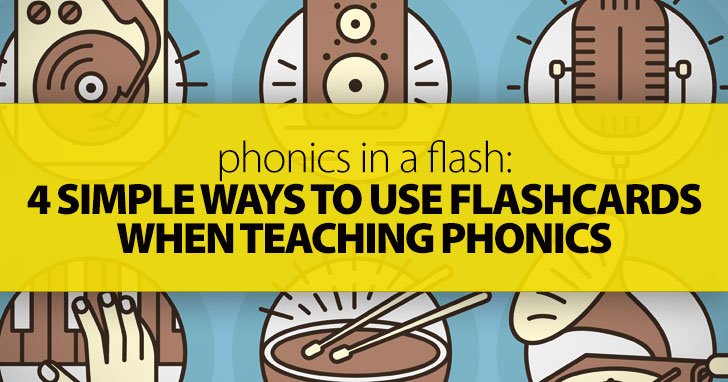Phonics in a Flash: 4 Simple Ways to Use Flashcards When Teaching Phonics

In many schools, phonics instruction is limited to flash cards and circling pictures on worksheets. While this type of phonics instruction can be beneficial to students, it can also be boring. Instead of keeping students in their seats while learning phonics, make it more fun by incorporating phonics activities that get them up out of their seats and moving, perhaps even dancing, around the classroom.
Kids love songs and rhymes and the sillier they are, the better. Phonics offers the perfect opportunity to sing a lot of silly songs and rhymes, including those kids make up themselves. As kids begin to learn phonics, make up songs about specific letters of the alphabet. The song could be as simple as saying the letter of the alphabet and the sound it makes and then singing a list of words that begin with the same sound. Once kids start to learn about word families, you can start to make up silly songs and rhymes including different words in the word family. For example, to the tune of “The Farmer in the Dell” you could sing a song like “The cat sat on the mat. He wore a funny hat. Oh what a sight to see, the cat sat on the mat.” While you may have to make the songs and rhymes at first, it won’t take long for kids to start making up some on their own. As kids start to make up rhymes, write them down and let them illustrate them or record videos of kids singing their songs so they can review them over and over.
Creative crafts are another way to get kids involved in the process of learning phonics and creating words. One of the simplest ways to get kids involved is to connect phonics to their daily lives. Make small booklets or posters showing examples of different letter sounds or word families. For example, on a poster for the –all word family, you could include cutouts from magazines, photographs and other objects to represent words such as ball, tall, fall, mall and call, clearly labeling each item with the corresponding word in the family. You can also play games that require children to recognize phonics around them. For example, during a game of “I Spy” instead of using colors, use letter sounds. For example, “I spy something that begins with a ‘ba’ sound” and have kids point out a ball or a bear.
You can also look for creative ways to help kids put words together. For example, buy a small spiral-bound notebook and cut it in half, leaving the spiral intact. On one half write the letters of the alphabet. On the other half, write different word families. You will have a homemade flipbook that kids can use to make different words and see which letters fit with each word family. Similar activities can be done with plastic eggs, writing the first letter of a word on one half of the egg and the rest of the word on the other half and challenging kids to match them up, or even on blank index cards.
When it comes to phonics instruction, kids need to see and hear phonics in multiple ways. The more creative you can be when it comes to presenting phonics to kids and the more you can get them involved in the process, the better.